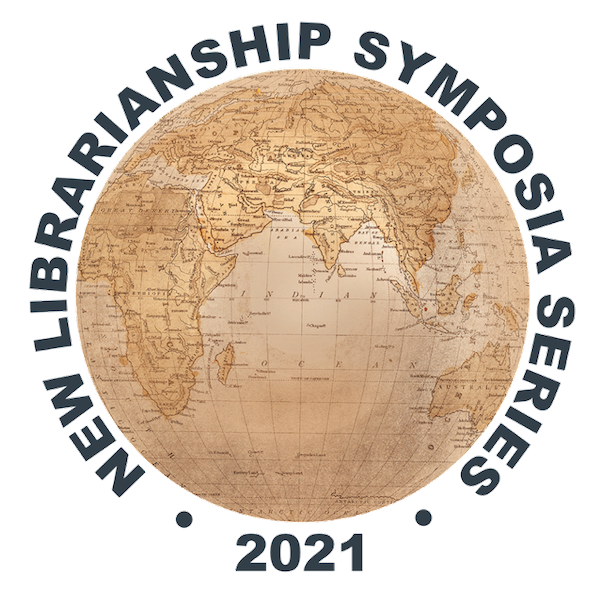Submission Type
Paper Abstract Submission
Symposium Selection
Equity, diversity, and inclusion
Keywords
Academic Libraries, Access Services, Instruction, Reference Service, Technology, Universal Design for Learning
Abstract
Academic librarians support the Ethical Code of Conduct and have always embraced students and patrons with various abilities. This paper draws together research on Universal Design for Learning (UDL) and showcases practical guidelines for academic library services. Since UDL is such a multifaceted framework, this article will not address all areas academic libraries can adopt it into their work practice. Instead, it will focus on the “traditional triad of public services: access, reference, and instruction.” (Coleman, Mallon, & Lo, 2015, p. 674)
The Universal Design for Learning (UDL) framework explores accessibility, assistive technology, attitudinal barriers, collaboration, equity, and proactively adjusting your teaching. An environment that uses a UDL approach embraces traditional and emerging teaching methods and tools to provide a holistic learning experience for as many students as possible. UDL also brings together the physical and neurological issues that account for many students' lives in general. To be clear, UDL is not accessibility, assistive, or accessibility technology (AT). The goal for both AT and UDL is to reduce barriers - assistive technology provides an individual view of learning by increasing or maintaining the functional capabilities of specific students. At the same time, UDL focuses on the whole learning environment so more students can benefit. (Stahl & Zabala, 2005).
First, this article summarizes the three core principles of UDL which are 1) engagement, 2) representation, and 3) action and expression. Then, followed by legal requirements and references for higher education as the principles of UDL were developed following the 1997 reauthorization of the Individuals with Disabilities Education Act (IDEA)” (Edyburn, 2010, p.33). However, the main focus of this paper are practical guidelines on how to implement UDL principles in Reference, Instruction, and Access Services.
The motivation behind this article is to encourage awareness of UDL and, as such, increase equity, diversity, and Inclusion to be an academic library for all kinds of students and patrons. Implementing UDL in academic libraries certainly is no panacea. However, it will help raise awareness and advocacy and thus ensure that libraries and their resources and services are available for all.
References
Coleman, J., Mallon, M. N., & Lo, L. (2015). Recent Changes to Reference Services in Academic Libraries and Their Relationship to Perceived Quality: Results of a National Survey. Journal of Library Administration, 56(6), 673-696.
Edyburn, D. L. (2010). Would You Recognize Universal Design for Learning if You Saw It? Ten Propositions for New Directions for the Second Decade of UDL. Learning Disability Quarterly, 33(1), 33-41.
Stahl, S., & Zabala, J. (2005). Assistive Technology and Universal Design for Learning: Two Sides of the Same Coin. In D. H. Rose, T. S. Hasselbring, & D. L. Edyburn (Authors), Handbook of special education technology research and practice.
Previous Versions
Included in
Fostering Equity, Diversity, and Inclusion by Adopting Universal Design for Learning principles in Academic Libraries
Academic librarians support the Ethical Code of Conduct and have always embraced students and patrons with various abilities. This paper draws together research on Universal Design for Learning (UDL) and showcases practical guidelines for academic library services. Since UDL is such a multifaceted framework, this article will not address all areas academic libraries can adopt it into their work practice. Instead, it will focus on the “traditional triad of public services: access, reference, and instruction.” (Coleman, Mallon, & Lo, 2015, p. 674)
The Universal Design for Learning (UDL) framework explores accessibility, assistive technology, attitudinal barriers, collaboration, equity, and proactively adjusting your teaching. An environment that uses a UDL approach embraces traditional and emerging teaching methods and tools to provide a holistic learning experience for as many students as possible. UDL also brings together the physical and neurological issues that account for many students' lives in general. To be clear, UDL is not accessibility, assistive, or accessibility technology (AT). The goal for both AT and UDL is to reduce barriers - assistive technology provides an individual view of learning by increasing or maintaining the functional capabilities of specific students. At the same time, UDL focuses on the whole learning environment so more students can benefit. (Stahl & Zabala, 2005).
First, this article summarizes the three core principles of UDL which are 1) engagement, 2) representation, and 3) action and expression. Then, followed by legal requirements and references for higher education as the principles of UDL were developed following the 1997 reauthorization of the Individuals with Disabilities Education Act (IDEA)” (Edyburn, 2010, p.33). However, the main focus of this paper are practical guidelines on how to implement UDL principles in Reference, Instruction, and Access Services.
The motivation behind this article is to encourage awareness of UDL and, as such, increase equity, diversity, and Inclusion to be an academic library for all kinds of students and patrons. Implementing UDL in academic libraries certainly is no panacea. However, it will help raise awareness and advocacy and thus ensure that libraries and their resources and services are available for all.
References
Coleman, J., Mallon, M. N., & Lo, L. (2015). Recent Changes to Reference Services in Academic Libraries and Their Relationship to Perceived Quality: Results of a National Survey. Journal of Library Administration, 56(6), 673-696.
Edyburn, D. L. (2010). Would You Recognize Universal Design for Learning if You Saw It? Ten Propositions for New Directions for the Second Decade of UDL. Learning Disability Quarterly, 33(1), 33-41.
Stahl, S., & Zabala, J. (2005). Assistive Technology and Universal Design for Learning: Two Sides of the Same Coin. In D. H. Rose, T. S. Hasselbring, & D. L. Edyburn (Authors), Handbook of special education technology research and practice.


